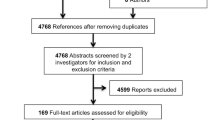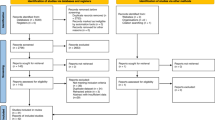Abstract
Purpose
We evaluated a systematic review on the therapeutic efficacy of topical steroids in children with phimosis to provide data for the clinical options of pediatric phimosis.
Methods
We searched the related original studies on topical steroid therapy in pediatric phimosis before August 2014. Two reviewers independently performed the study selection, data extraction, risk of bias and reporting quality assessment with confirmation by cross-checking. The quality of eligible studies was appraised with the ‘Cochrane handbook.’ The meta-analysis was performed by REVMAN 5.2 software.
Results
Eleven studies were included with 1669 patients among which 1093 received topical steroids and 576 cases treated with placebo or only manual reduction. Significant difference of the treatment efficacy was detected among the three methods [OR 7.46, 95 % CI (4.42, 12.58), p < 0.00001]. In subgroup analysis, significant difference of the treatment efficacy was also detected whether with placebo or manual reduction only [respectively, OR 5.04, 95 % CI (3.19, 7.95), p < 0.00001; OR 16.28, 95 % CI (6.06, 43.69), p < 0.00001].
Conclusions
Compared to the placebo or manual reduction method, the topical steroid therapy is more effective in the treatment of phimosis in children. Although there is still controversy in the different type and dosage of steroid, this could be used against phimosis before circumcision.






Similar content being viewed by others
References
Letendre J, Barrieras D, Franc-Guimond J, Abdo A, Houle AM (2009) Topical triamcinolone for persistent phimosis. J Urol 182(4 Suppl):1759–1763. doi:10.1016/j.juro.2009.03.016
Oster J (1968) Further fate of the foreskin. Incidence of preputial adhesions, phimosis, and smegma among Danish schoolboys. Arch Dis Child 43(228):200–203
Phillips B (2004) GRADE: levels of evidence and grades of recommendation. Arch Dis Child 89:489
Higgins JP, Thompson SG, Deeks JJ, Altman DG (2003) Measuring inconsistency in meta-analyses. BMJ (Clinical research ed) 327(7414):557–560. doi:10.1136/bmj.327.7414.557
Golubovic Z, Milanovic D, Vukadinovic V, Rakic I, Perovic S (1996) The conservative treatment of phimosis in boys. Br J Urol 78(5):786–788
Lindhagen T (1996) Topical clobetasol propionate compared with placebo in the treatment of unretractable foreskin. Eur J Surg 162(12):969–972
Lund L, Wai KH, Mui LM, Yeung CK (2005) An 18-month follow-up study after randomized treatment of phimosis in boys with topical steroid versus placebo. Scand J Urol Nephrol 39(1):78–81. doi:10.1080/00365590410002519
Lee JW, Cho SJ, Park EA, Lee SJ (2006) Topical hydrocortisone and physiotherapy for nonretractile physiologic phimosis in infants. Pediatr Nephrol (Berlin, Germany) 21(8):1127–1130. doi:10.1007/s00467-006-0104-8
Pileggi Fde O, Vicente YA (2007) Phimotic ring topical corticoid cream (0.1% mometasone furoate) treatment in children. J Pediatr Surg 42(10):1749–1752. doi:10.1016/j.jpedsurg.2007.05.035
Esposito C, Centonze A, Alicchio F, Savanelli A, Settimi A (2008) Topical steroid application versus circumcision in pediatric patients with phimosis: a prospective randomized placebo controlled clinical trial. World J Urol 26(2):187–190. doi:10.1007/s00345-007-0231-2
Zampieri N, Corroppolo M, Zuin V, Bianchi S, Camoglio FS (2007) Phimosis and topical steroids: new clinical findings. Pediatr Surg Int 23(4):331–335. doi:10.1007/s00383-007-1878-x
Nascimento FJ, Pereira RF, Silva JL 2nd, Tavares A, Pompeo AC (2011) Topical betamethasone and hyaluronidase in the treatment of phimosis in boys: a double-blind, randomized, placebo-controlled trial. Int Braz J Urol 37(3):314–319
Chu CC, Chen KC, Diau GY (1999) Topical steroid treatment of phimosis in boys. J Urol 162(3 Pt 1):861–863
Zampieri N, Corroppolo M, Camoglio FS, Giacomello L, Ottolenghi A (2005) Phimosis: stretching methods with or without application of topical steroids? J Pediatr 147(5):705–706. doi:10.1016/j.jpeds.2005.07.017
Yilmaz E, Batislam E, Basar MM, Basar H (2003) Psychological trauma of circumcision in the phallic period could be avoided by using topical steroids. Int J Urol 10(12):651–656
Zavras N, Christianakis E, Mpourikas D, Ereikat K (2009) Conservative treatment of phimosis with fluticasone proprionate 0.05 %: a clinical study in 1185 boys. J Pediatr Urol 5(3):181–185. doi:10.1016/j.jpurol.2008.11.006
Reddy S, Jain V, Dubey M, Deshpande P, Singal AK (2012) Local steroid therapy as the first-line treatment for boys with symptomatic phimosis: a long-term prospective study. Acta Paediatr (Oslo, Norway : 1992) 101(3):e-130–e-133. doi:10.1111/j.1651-2227.2011.02534.x
Rao LS, Long WS, Kaneko T, Blumenberg M (2003) Regulation of transcription factor activity by extracellular signals in epidermal keratinocytes. Acta Dermatovenerol 12:3–14
Radoja N, Komine M, Jho SH, Blumenberg M, Tomic-Canic M (2000) Novel mechanism of steroid action in skin through glucocorticoid receptor monomers. Mol Cell Biol 20(12):4328–4339
Monsour MA, Rabinovitch HH, Dean GE (1999) Medical management of phimosis in children: our experience with topical steroids. J Urol 162(3 Pt 2):1162–1164
Sabino Borges LG, Perez-Boscollo AC, Rocha LP, Silva RC, Guimaraes CS, Castro EC, Correa RR (2012) Foreskin analysis of circumcised boys with and without previous topical corticosteroid. Fetal Pediatr Pathol 31(5):265–272. doi:10.3109/15513815.2012.659381
Favorito LA, Balassiano CM, Rosado JP, Cardoso LE, Costa WS, Sampaio FJ (2012) Structural analysis of the phimotic prepuce in patients with failed topical treatment compared with untreated phimosis. Int Braz J Urol 38(6):802–808
Yang SS, Tsai YC, Wu CC, Liu SP, Wang CC (2005) Highly potent and moderately potent topical steroids are effective in treating phimosis: a prospective randomized study. J Urol 173(4):1361–1363. doi:10.1097/01.ju.0000156556.11235.3f
Binet A, François-Fiquet C, Bouche-Pillon MA (2015) Review of clinical experience for a new preputioplasty technique as circumcision alternative. Ann Chir Plast Esthet. doi:10.1016/j.anplas.2015.01.003
Munro NP, Khan H, Shaikh NA, Appleyard I, Koenig P (2008) Y-V preputioplasty for adult phimosis: a review of 89 cases. Urolgoy 72(4):918–920
Berdeu D, Sauze L, Ha-Vinh P, Blum-Boisgard C (2001) Cost-effectiveness analysis of treatments for phimosis: a comparison of surgical and medicinal approaches and their economic effect. BJU Int 87(3):239–244
Van Howe RS (1998) Cost-effective treatment of phimosis. Pediatrics 102(4):43
Author contributions
JML, JY and YTC drafted the manuscript. YTC, SHC, CX and TD performed the study selection, data extraction, risk of bias and reporting quality assessment. YTC performed the statistical work. All authors have read and approved the final manuscript.
Author information
Authors and Affiliations
Corresponding author
Ethics declarations
Conflict of interest
The authors declare that they have no conflict of interest.
Additional information
Jiaming Liu, Jin Yang and Yuntian Chen have contributed equally to the work.
Rights and permissions
About this article
Cite this article
Liu, J., Yang, J., Chen, Y. et al. Is steroids therapy effective in treating phimosis? A meta-analysis. Int Urol Nephrol 48, 335–342 (2016). https://doi.org/10.1007/s11255-015-1184-9
Received:
Accepted:
Published:
Issue Date:
DOI: https://doi.org/10.1007/s11255-015-1184-9




